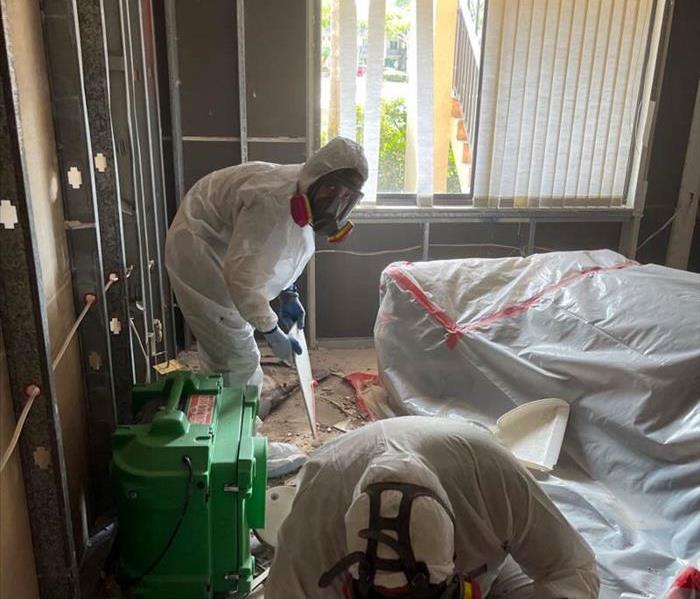Clearing Up the Confusion: Is There a Standard for Mold Cleaning?
5/17/2023 (Permalink)
 The specifics of the cleaning process will depend on the type of mold, the extent of the contamination, and the materials affected.
The specifics of the cleaning process will depend on the type of mold, the extent of the contamination, and the materials affected.
Mold is a common problem that can occur in any home or building. It not only damages the surfaces it grows on but can also cause serious health problems if left untreated. When dealing with mold, it's important to understand that there is no one-size-fits-all approach to cleaning it up. While there are some general guidelines to follow, the specifics of the mold cleaning process will depend on the type of mold, the extent of the contamination, and the materials affected.
First Steps
The first step in mold cleaning is to identify the type of mold present. There are many different types of mold, and each requires a different approach to cleaning. For example, some molds can be removed with a simple solution of water and detergent, while others require specialized cleaners and equipment. Some molds are toxic and require professional remediation, while others can be safely removed by homeowners.
Identifying the type of mold
Once the type of mold is identified, the next step is to assess the extent of the contamination. If the mold is limited to a small area, it can often be removed by the homeowner using simple cleaning methods. However, if the mold has spread throughout the building or has affected porous materials such as drywall or carpeting, it may require professional remediation.
Proper Equipment
When cleaning mold, it's important to use proper safety equipment such as gloves, masks, and goggles to protect yourself from exposure to mold spores. Additionally, it's important to follow the manufacturer's instructions for any cleaning products used and to ensure that the area is well-ventilated.
Follow guidelines
While there is no standard for mold cleaning, there are guidelines and best practices that can be followed to ensure that the mold is safely and effectively removed. The Environmental Protection Agency (EPA) has published guidelines for mold remediation that include steps such as identifying the source of moisture, isolating the contaminated area, removing contaminated materials, and ensuring that the area is thoroughly dried and disinfected.
In addition to following these guidelines, it's important to address the underlying moisture problem that caused mold growth in the first place. Without addressing the source of the moisture, the mold is likely to return.
In conclusion, mold cleaning is not a one-size-fits-all process. The specifics of the cleaning process will depend on the type of mold, the extent of the contamination, and the materials affected. While there is no standard for mold cleaning, following guidelines and best practices can help ensure that the mold is safely and effectively removed and that the underlying moisture problem is addressed to prevent future mold growth.





 24/7 Emergency Service
24/7 Emergency Service